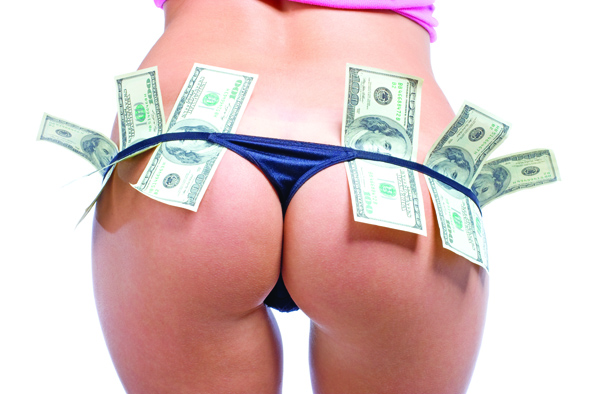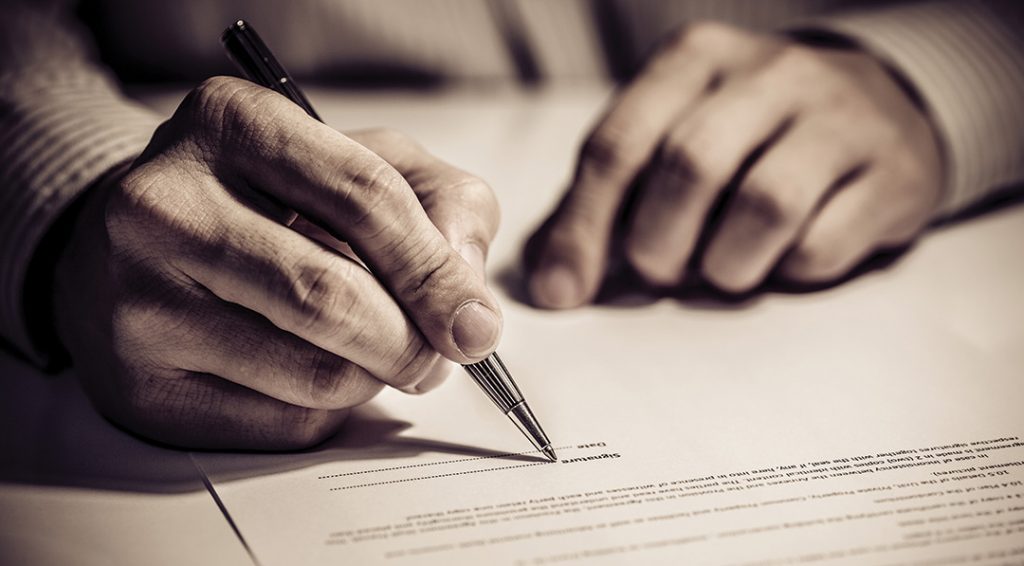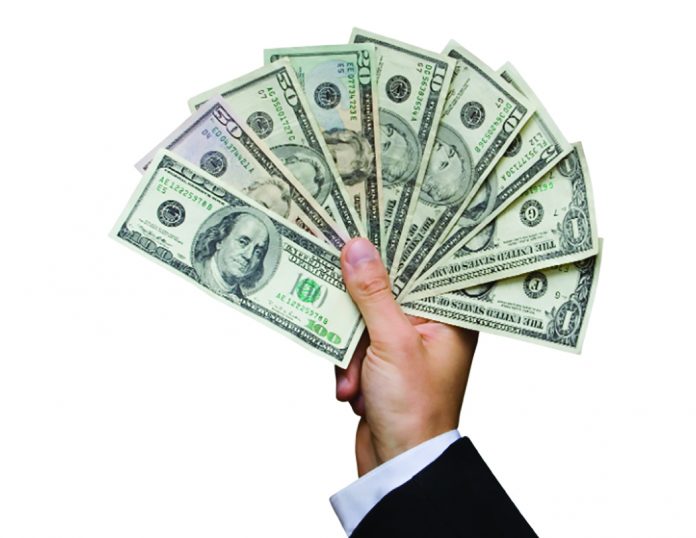story courtesy of Angelina Spencer, Executive Director of ACE National
Last week, the SBA and Treasury Department released their official guidance on how the second round of PPP will work. The second round PPP Loan application process opens TODAY.
Note: Many adult club owners are concerned they won’t or don’t qualify for PPP due to past denials and/or an SBA provision regarding prurient business. Not so fast! Some club operators successfully filed suit against the last round of denials and won:
1. Michigan case:
DV Diamond Club of Flint, LLC, et al. v. United States Small Business Administration, et al., Case No. 20-cv-10899, 2020 WL 2315880 (E.D. Mich. May 11, 2020).
DV Diamond Club of Flint, LLC, et al. v. Small Business Administration, Case No. 20-1437 (6th Cir. May 15, 2020).
This is the outcome of the aforementioned MI Case that Brad Shafer Filed: https://www.burr.com/blogs/consumer-finance-litigation/2020/05/21/michigan-court-grants-injunctive-relief-against-sba-regarding-ineligibility-criteria-for-loans-to-small-businesses/
2. New York, Steve McCarthy & Blush Gentlemen’s Club:
https://nypost.com/2020/05/12/federal-judge-rules-strip-clubs-are-entitled-to-emergency-ppp-aid/
3. Wisconsin Clubs Sue: https://www.law.com/nationallawjournal/2020/05/20/us-appeals-court-opens-door-to-strip-clubs-receiving-federal-coronavirus-relief/?slreturn=20200426110824
Here is the WI Case: https://www.courthousenews.com/wp-content/uploads/2020/05/220cv601-consolidated-ruling.pdf
(Please consult your attorney for legal questions regarding PPP Loans)
 Eligible businesses
Eligible businesses
Small businesses, sole proprietors, independent contractors and others that previously received a PPP loan can apply for a second draw PPP loan, if they satisfy the law’s requirements.
Ineligible businesses: A business/organization that was not in operation on February 15, 2020; publicly traded companies; a recipient of a Shuttered Venue Operator Grant as established by the COVID-19 Relief Act; foreign-owned or operated businesses; some other limited exclusions.
Qualifying business size: To qualify, an eligible business must employ fewer than 300 employees. For restaurants and hotels operating under NAICS 72, this size standard is
set at 300 “per physical location,” allowing companies with multiple locations to access a second draw. Restaurants and hotels had a similar standard under the first draw in 2020, but that threshold was set at 500 employees per location.
Demonstrating losses
Revenue losses: Businesses must show the loss of a gross receipt of 25% or more across a calendar quarter when compared to an applicable time period.
Gross receipts during the first, second, third, or fourth quarter in 2020 must show a 25% or more decrease from the gross receipts of the business during the same quarter in 2019.
• If the company was not in business during the first or second quarter of 2019, but was in business during the third and fourth quarter of 2019, its gross receipts during the first, second, third, or fourth quarter of 2020 must show a 25% or more decrease from the gross receipts of the business during the third or fourth quarter of 2019.
If the company was not in business during the first, second, or third quarter of 2019, but was in business during the fourth quarter of 2019, its gross receipts during the first, second, third, or fourth quarter of 2020 must show a 25% or more decrease from the gross receipts of the business during the fourth quarter of 2019.
• If the company was not in business during 2019, but was in operation on February 15, 2020, its gross receipts during the second, third, or fourth quarter of 2020 must show a 25% or more decrease from the gross receipts of the business during the first quarter of 2020.
Note: An eligible business may have been temporarily “closed” or not in business for a portion of time due to COVID-19 and can still qualify for a second draw PPP.
Additionally, eligibility rules require the applicant to have received and exhausted a first draw PPP loan for eligible expenses before receiving a second draw. There does not appear to be a requirement that a first draw PPP loan must be forgiven before applying for, or receiving, a second draw PPP loan. First draw PPP recipients can take up to 10 months after finishing the covered period to submit the forgiveness application. While SBA retains the ability to review unresolved first draw loans, in which eligibility or eligible loan amounts are in question, these procedures do not disqualify an eligible unresolved borrower from receiving a second draw PPP loan.
 Determining 25% gross receipt loss
Determining 25% gross receipt loss
“Gross Receipts” include all revenue in “whatever form received or accrued from whatever source,” including from sales of products or services, interest, dividends, rents, royalties, fees, or commissions, reduced by returns and allowances. Generally, receipts are considered “total income” (or in the case of a sole proprietorship, independent contractor, or self-employed individual “gross income”) plus “cost of goods sold,” and excludes net capital gains or losses.
“Gross Receipts” cannot include a forgiven PPP loan; taxes collected for and remitted to a taxing authority if included in gross or total income (such as sales or other taxes collected from customers and excluding taxes levied on the concern or its employees); proceeds from transactions between a concern and its domestic or foreign affiliates; and amounts collected for another by a travel agent, real estate agent, advertising agent, conference management service provider, freight forwarder or customs broker. All other items, such as subcontractor costs, reimbursements for purchases a contractor makes at a customer’s request, investment income, and employee-based costs such as payroll taxes, may not be excluded from gross receipts. Gross receipts documentation is required for all applicants of $150,000+ loans, but lenders must also conduct a “good faith review” of all documentation for forgiveness.
For second draw loans greater than $150,000, an applicant must show documentation to the lender to show the 25% loss, such as annual tax forms or (if relevant tax forms are not available) quarterly financial statements or bank statements.
For second draw loans of $150,000 or less, documentation is not required at the time of application, but must be submitted on or before the date the borrower applies for loan forgiveness.
How much relief is available?
An eligible NAICS 72 restaurant or hotel determines its second draw PPP loan amount by choosing an average monthly payroll option and multiplying that figure by 3.5; other types of businesses are limited to multiplying this figure by 2.5, but eligible restaurants and hotels have increased access to PPP funds. The maximum PPP second draw loan available to any business is $2 million.
SBA has three options to calculate the average monthly payroll figure that is multiplied by 3.5 to calculate the second draw loan amount:
1. Use the average monthly payroll from 2019, or;
2. Use the average monthly payroll from 2020, or;
3. Borrowers who are not self-employed (including sole proprietorships and independent contractors) can also use the average monthly payroll for the 12-month period before the PPP second draw loan origination date
For a new entity, that did not exist during the one-year period before February 15, 2020, but was in operation on February 15, 2020, its loan amount can be calculated by multiplying the below figure by 3.5:
1. The sum total of monthly payments made by the borrower to cover payroll costs (as of the date the borrower applies for the second draw loan) and dividing that sum by:
2. The number of months in which those payroll costs were paid.
For seasonal businesses, the figure can be calculated by selecting the average total monthly payments for payroll costs paid by the eligible business for any 12-week period between February 15, 2019 and February 15, 2020. These seasonal businesses can use the 3.5 multiplier if they are NAICS 72.
• Criteria to establish a seasonal business is that it operates seven months or less per year; or in the preceding calendar year, has gross receipts for any six months of the year that were not more than 33.33% of the gross receipts of the business for the other six months of such year.
Application timing
PPP will re-open the week of January 11 for new borrowers and certain existing PPP borrowers. To promote access to capital, initially only community financial institutions will be able to make First Draw PPP Loans on Monday, January 11, and Second Draw PPP Loans on Wednesday, January 13. The PPP will open to all participating lenders shortly thereafter.
There are targeted “set aside” funds for categories such as new and smaller borrowers; borrowers in low- and moderate-income communities; and for community and smaller lenders. These include:
$35 billion for new first draw PPP borrowers.
$15 billion and $25 billion for first draw and second draw PPP loans, respectively, for borrowers with a maximum of 10 employees or for loans less than $250,000 to borrowers in low- or moderate-income neighborhoods.
$15 billion for first and second draw PPP loans for lending by community financial institutions.
$15 billion for first and second draw PPP loans for lending by Insured Depository Institutions, Credit Unions, and Farm Credit System Institutions with consolidated assets of less than $10 billion.
SBA has authority to issue loans under the PPP second draw through March 31, 2021, but there may be liquidity concerns before this date given the ongoing and substantial need among small businesses.

Maximizing loan forgiveness
The loan forgiveness process is mostly maintained from the Paycheck Protection Program Flexibility Act, signed into law in June 2020. An applicant selects a covered period between 8 and 24 weeks at the election of the borrower. Similar to the first draw PPP, a second draw borrower must use at least 60% of the PPP proceeds for payroll expenses, and no more than 40% of the proceeds for non-payroll expenses.
• Example: If a borrower receives a $100,000 PPP loan, and during the covered period the borrower spends $54,000 (or 54%) of its loan on payroll costs, the maximum amount
of loan forgiveness the borrower may receive is $90,000 (with $54,000 in payroll
costs constituting 60% of the forgiveness amount and $36,000 in non-payroll costs constituting 40% of the forgiveness amount).
Forgivable expenses for payroll:
• Salary, wages, commissions, cash tips or the equivalent (based on employer records of past tips or a reasonable, good-faith employer estimate of such tips).
• Payment for vacation, parental, family, medical, or sick leave.
* Allowance for separation or dismissal.
* Payment for the provision of employee benefits consisting of group health care or group life, disability, vision, or dental insurance, including insurance premiums, and retirement.
* Payment of state and local taxes assessed on compensation of employees.
* For an independent contractor or sole proprietor, this includes wages, commissions, income, or net earnings from self-employment, or similar compensation.
Excluded Payroll Expenses include compensation for employees living outside the U.S., compensation of an employee in excess of $100,000 per year (prorated for the period during which the payments are made or the obligation to make the payments is incurred); federal employment taxes imposed or withheld during the applicable period, including the employee’s and employer’s share of Federal Insurance Contributions Act (FICA) and Railroad Retirement Act taxes, and income taxes required to be withheld from employees; and qualified sick and family leave wages through the Families First Coronavirus Response Act.
Eligible/forgivable expenses for non-payroll expenses:
Rent payments;
Mortgage interest payments (but not mortgage prepayments or principal payments);
Utility payments;
Interest payments on any other debt obligations incurred before February 15, 2020;
Refinancing an SBA EIDL loan made between January 31, 2020 and April 3, 2020;
Operations expenditures (payments for any business software or cloud computing service for business operations, product or service delivery, the processing, payment, or tracking of payroll expenses, human resources, sales and billing functions, or accounting or tracking of supplies, inventory, records and expenses);
Property damage costs related to vandalism or looting due to public disturbances that occurred during 2020, not covered by insurance or other compensation;
Supplier costs for goods that are essential to the business’ operations at the time when the expenditure is made and is made for a contract, order, or purchase order 1) in effect at any time before the covered period with respect to the second draw loan; or 2) with respect to perishable goods, in effect before or at any time during the covered period with respect to the applicable covered loan.
Worker protection expenditures are defined as: operating or capital expenses to
adapt business activities to comply with guidance from federal agencies (HHS, CDC, OHSA), or any equivalent guidance from a state or local government, during the period beginning on March 1, 2020 until the national COVID-19 emergency expires related to new standards for sanitation, social distancing, or any other worker or customer safety requirement related to COVID-19. These expenditures include:
Purchase, maintenance, or renovation of assets to create or expand a drive-thru window facility
• An indoor, outdoor, or combined air or air pressure ventilation or filtration system o A physical barrier such as a sneeze guard
• An expansion of additional indoor, outdoor, or combined business space
• An onsite or offsite health screening capability • Other “assets” determined by SBA
• Particulate filtering facepiece respirators approved by the NIOSH, including those approved only for emergency use authorization
• Other kinds of personal protective equipment, as determined by SBA
PPP improvements and streamlined forgiveness
PPP borrowers—for both first draw and second draw—with loans of up to $150,000 can use a streamlined, one-page loan forgiveness form. Borrowers are required to certify they have complied with the program.
PPP loans of up to $150,000 will be forgiven if the PPP borrower:
1. Submits simple, one-page certification with a description of the number of employees the eligible recipient was able to retain and the estimated amount of the covered loan spent by the eligible recipient on payroll costs, and
2. Affirms that the borrower accurately provided the one-page certification and complied with PPP requirements; and retains records to comply with requirements:
• for employment records, the four-year period after submission of the forgiveness application; and
• for other records, the three-year period after submission of the forgiveness application.
When a PPP borrower submits a one-page certification and retains the proper documentation, it appears the lender can approve forgiveness in full. All borrowers may be subject to SBA audit. For borrowers with loans over $150,000, the documentation and process remains the same.
EIDL Advance Grants: The SBA will no longer reduce a PPP borrower’s forgiveness amount based on the amount received from a separate Economic Injury Disaster Loan (EIDL) advance grant. Any EIDL advance amounts previously deducted from a borrower’s forgiveness amount are to be remitted to the lender, together with interest to the remittance date.page6image1826979744TAX DEDUCTIBILITY
Allowable business expenses paid with PPP funds, from round one or two, are now tax deductible: The latest pandemic relief bill amended the CARES Act to specify that no deduction would be denied, no tax attribute would be reduced, and no basis increase would be denied, by reason of the exclusion from gross income of the forgiveness of an eligible loan. The change applies for tax years ending after March 27, 2020. The new revenue ruling makes “obsolete” previous IRS/Treasury guidance from the IRS and the Treasury last year
in Notice 2020-32 and Revenue Ruling 2020-27, which stated that PPP loan forgiveness expenses could not be deducted.
Loan terms retained in first- and second-draw
The federal guarantee percentage remains at 100% of the loan, with no collateral or personal guarantees required by borrowers.
The interest rate is 1%, calculated on a non-compounding, non-adjustable basis.
The loan maturity is five years.
Loans will be processed by lenders under “delegated authority,” as lenders can rely on borrower certifications to determine the borrower’s eligibility and use of loan proceeds.
Restaurant/hotel affiliation rules waiver
Restaurants and hotels (NAICS 72) retain a waiver of SBA affiliation rules, created by the CARES Act, when accessing PPP first draw and now second draw loans. As stated by the SBA rules, if each hotel or restaurant location “owned by a parent business is a separate legal business entity and employs not more than [300] employees, each hotel or restaurant location is permitted to apply for a separate PPP loan provided it uses its unique [employer identification number] EIN.” This waiver ensures that restaurant and hotel eligibility for second draw PPP loans is governed by the same affiliations rules (and waivers) as first draw PPP loans, except for the 300 employee-per-location limit. Some club operators rebranded during CV-19 with restaurant licenses and may qualify.
Single corporate group limit
It appears that eligible businesses that are part of a “single corporate group” cannot receive more than $4 million in the aggregate. The SBA created this limitation of $4 million since it is “proportional” to the $20 million maximum amount for a single corporate group under the first draw of PPP, when the maximum loan amount was $10 million.





























